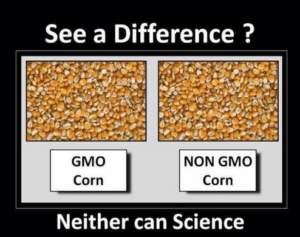In the wake of the decision by a California federal court concluding that Monsanto’s Roundup, whose active ingredient is glyphosate, likely caused a gardener’s cancer, many countries in Europe may be tempted to reassess the herbicide’s future. In 2017, the EU member states agreed on a five-year renewal period for glyphosate, instead of the originally proposed 15 years. This was only possible since Germany unexpectedly voted in favor of renewal. French President Emmanuel Macron said then that he would ban glyphosate “as soon as alternatives have been found, or within three years at the latest.” It’s not clear how the recent California decision might change the timetable or impact Germany’s position. The net of the situation is that the public is even more confused about the impact of genetically engineered crops even though every major agricultural and health agency in the world has declared them safe.
Two studies published in 2016 and 2017 by the research team that includes Gilles-Eric Séralini, the French scientist notorious for his discredited ‘cancer-twisted rats’ study (see below) and getting renewed attention because of the California trial is further clouding the waters. One study claimed that a GM Roundup-tolerant maize (sprayed or unsprayed with Roundup) was not “substantially equivalent” to its (non-genetically engineered) isogenic line. This was based on some differences in the levels of a limited number of metabolites and proteins between the GM and the control maize line. The authors speculated that these data may explain their previous claims (in 2012, republished in 2014) of negative health effects due to the consumption of this maize. The second article performed similar experiments using rats administered Roundup for two years and claimed observing rat liver dysfunction due to this exposure.

Scientists rebut claims in same journal
Now Scientific Reports, the source of the original two articles, has published a rebuttal. It cites numerous concerns, from flaws in design to methodology and interpretation. Having read the rebuttal article by Dennis Eriksson, Klaus Ammann, Bruce Chassy and Aakash Chawade, a number of lessons can be learned from their analysis. The central flaw in the papers in their use of omic technologies’. The so-called “omic technologies” are large scale profilings of metabolites, or proteins, or gene activity in a given organism. They are extensively used in research, but are not yet considered as reliable for risk assessment.
Considering the host of problems this research raises, it seems legitimate to question the editorial decision to publish these flawed studies in the first place, and more generally of other articles dealing with “GMO” assessment, which have subsequently been rebutted.
First, it is important for editors to realize that the review of these kinds of papers not only requires cross-disciplinary expertise (i.e. molecular biology, biochemistry, toxicology, agronomy, animal science, veterinary medicine, nutrition, statistics) of larger scope than most other papers, but also that each reviewer be fully aware of specific guidelines for GMO assessment.
Second, because GMOs and pesticides are highly politicalized issues, special care is warranted before accepting publications dealing with their potential risks and impacts. Editors and reviewers should not surrender to politics or political correctness or sensationalism, but need to maintain the highest standards of excellence.
Third, the track record of rebutted articles by some authors of the above-mentioned articles should not be ignored. Back in 2007, their claims in an article entitled New Analysis of a Rat Feeding Study with a Genetically Modified Maize Reveals Signs of Hepatorenal Toxicity were rejected by all risk assessment agencies which examined them (see EFSA; BfR: Food Standards Aus/NZ). The French agency AFSSA (now ANSES even stated (translation):
These authors seem to ignore the elementary rule regularly emphasized by the scientific community and international institutions, namely that a significant statistical difference does not necessarily lead to a biological conclusion”. Regarding a 2009 paper by the same team (a comparison of the effects of three GM corn on mammalian health), FNANZ concluded that the authors “have distorted the toxicological significance of their results by placing undue emphasis on the statistical treatment of data, and failing to take other relevant factors into account.
Their high profile 2012 paper claiming “Long term toxicity of a Roundup herbicide and a Roundup-tolerant genetically modified maize” was finally retracted by Food and Chemical Toxicology. This flawed study was later republished without peer-review by Environmental Sciences Europe allegedly “to give the scientific community guaranteed long-term access to the data in the retracted paper”, according to its editor-in-chief. Thus, no consideration was given to the widespread criticism raised by the original publication. It should also be mentioned that European research programs have re-examined the safety of this maize and that “No toxicologically relevant effects related to the GM maize NK603 or the GM maize NK603 treated with Roundup were observed”.

The flawed publications take us to the concept of “parallel science”. “Parallel science” mimics science, but it is not science since its conclusions precede experimentation. It is “parallel” since it will never join scientific knowledge and consensus, never take criticism into account. Political ecology is repeatedly using this strategy, especially regarding risk assessment of technologies it dislikes.
There are many reasons which can explain the rise of “parallel science”. One obviously being the dark side of the force of the environmental movement and its financial ability (such “parallel science” has repeatedly been financed by “green” lobbies or industries exploiting this “green” ideology for their own profit).
A second reason is linked to the postmodern “deconstruction” of the Enlightenment values in the Western world, which as far as scientific truth is concerned occurred even in the heart of scientific institutions. As stated by Andrew Calcutt, “more than 30 years ago, academics started to discredit ‘truth’ as one of the “grand narratives” which clever people could no longer bring themselves to believe in. Instead of “the truth”, which was to be rejected as naïve and/or repressive, a new intellectual orthodoxy permitted only “truths” – always plural…”
“Plural truths” is actually a synonym of “post-truth”. In 2016, Oxford Dictionaries selected “post-truth” as the ‘Word of the Year’. They define it as “relating to or denoting circumstances in which objective facts are less influential in shaping public opinion than appeals to emotion and personal belief”, with the comment that “in this era of post-truth politics, it’s easy to cherry-pick data and come to whatever conclusion you desire”. The reason for selecting this word was obviously linked to the Brexit referendum in the UK and the presidential election in the USA. However, the Oxford Dictionaries definition of post-truth strikingly also applies to what happened in the scientific and technological fields: activists’ biased risk claims have become dominant in the media and on the internet, and are increasingly present in the scientific literature.
In summary, post-truth is actually consubstantial of the contemporary postmodern ideology. What is true or false has less and less importance. What matters is to bow to political correctness. A so-called democratization process dictates that all opinions should be given equal value, even in science and in deeply complex technological fields! The “epistemological anarchy” of philosopher of science Paul Feyerabend has materialized: “anything goes”!
Marcel Kuntz is a director of research at Centre National de la Recherche Scientifique (CNRS) in the Cell & Plant Physiology Laboratory in Grenoble (France). You can find him on LinkedIn and his research at ResearchGate. Professor Kuntz has no conflicting financial interests































